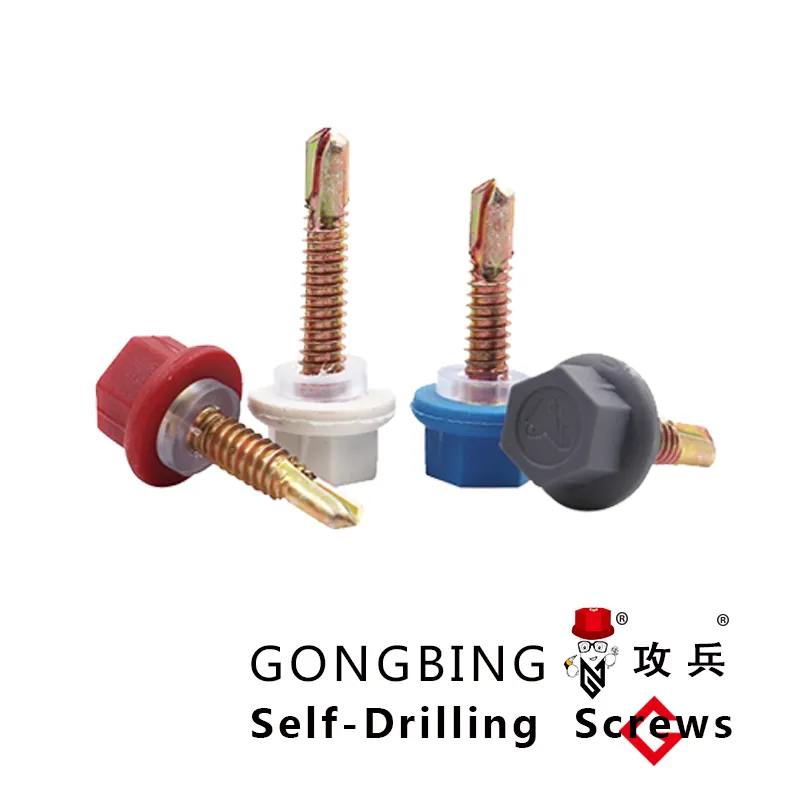hex head screw self tapping
Understanding Hex Head Self-Tapping Screws A Comprehensive Guide
When it comes to construction and manufacturing, the tools and materials we use play a crucial role in the efficiency and effectiveness of our projects. One such essential component that has been a staple in various applications is the hex head self-tapping screw. This article will delve into the characteristics, advantages, applications, and proper usage of hex head self-tapping screws.
What Are Hex Head Self-Tapping Screws?
Hex head self-tapping screws are threaded fasteners with a distinctive hexagonal head, designed to be driven directly into materials without needing a pre-drilled hole. The 'self-tapping' feature allows these screws to create their own hole as they are driven in, making them particularly useful for fastening materials like metal, plastic, and wood. The hexagonal shape allows for an easy grip with a wrench or socket, providing more torque compared to other screw types.
Features and Characteristics
1. Material Composition Hex head self-tapping screws are commonly made from materials like stainless steel, carbon steel, or alloy steel, often treated for enhanced corrosion resistance. This ensures durability and longevity, especially in outdoor or demanding environments.
2. Thread Design These screws come with varying thread designs, including coarse and fine threads. Coarse threads are typically used for softer materials, while fine threads are suitable for harder substrates, offering increased holding power.
3. Drive Type The hexagonal head allows for various driving methods. They can be driven with a wrench, socket, or impact driver, depending on the torque requirements.
4. Point Style There are different point styles available, such as sharp points for easy penetration and self-drilling points for efficient drilling into tougher materials. This versatility allows users to select the right screw for their specific application.
Advantages of Hex Head Self-Tapping Screws
- Ease of Use The most significant advantage of hex head self-tapping screws is their ease of use. They eliminate the need for pre-drilling, saving time and reducing labor costs.
- Versatility These screws can be used across various materials, including metal, wood, plastic, and composites. This versatility makes them suitable for industries ranging from construction and automotive to electronics and furniture.
- Strong Grip The hexagonal head design enables users to apply considerable torque, resulting in a secure fit. This feature is especially beneficial in applications where vibration resistance is required.
hex head screw self tapping

- Cost-Effectiveness Due to their ability to cut their own threads, these screws can reduce the need for additional hardware or processes, making them a cost-effective solution for many projects.
Applications
Hex head self-tapping screws have a plethora of applications across various sectors
1. Construction They are widely used in the construction industry for metal-to-metal or metal-to-wood connections, such as framing, roofing, and siding.
2. Automotive In automotive assembly, these screws provide reliable fastening solutions due to their resistance to vibration and extreme conditions.
3. Manufacturing In manufacturing setups, where speed and efficiency are paramount, hex head self-tapping screws streamline assembly processes.
4. Home Improvement DIY enthusiasts frequently employ these screws for various home projects, from furniture assembly to securing fixtures.
Proper Usage
To maximize the benefits of hex head self-tapping screws, it's vital to consider the following
- Choose the Right Size Selecting the correct size and type (coarse or fine thread) based on the material is crucial for optimal holding strength and performance.
- Use the Appropriate Tools Ensure you have the right drill bit, wrench, or socket to match the screw size and head type to achieve the best results.
- Follow Torque Recommendations Over-tightening can strip the screw or damage the material, so it’s essential to apply the right amount of torque.
In conclusion, hex head self-tapping screws are essential components in a wide array of applications. Their unique features, coupled with their user-friendly design, make them an indispensable tool in both professional and DIY projects. By understanding their characteristics and proper usage, you can enhance the quality and efficiency of your work, ensuring successful outcomes in every endeavor.
-
Weatherproof Plastic Expansion Anchors for OutdoorNewsJun.06,2025
-
Sustainability in the Supply Chain: Eco-Friendly TEK Screws ProductionNewsJun.06,2025
-
Load-Bearing Capacity of External Insulation FixingsNewsJun.06,2025
-
Double Head Bolts: Enhancing Efficiency in Industrial MachineryNewsJun.06,2025
-
Corrosion Resistance in Chipboard Screws: Coatings for Wholesale DurabilityNewsJun.06,2025
-
Butterfly Toggle Bolts : Enhancing Structural ResilienceNewsJun.06,2025
